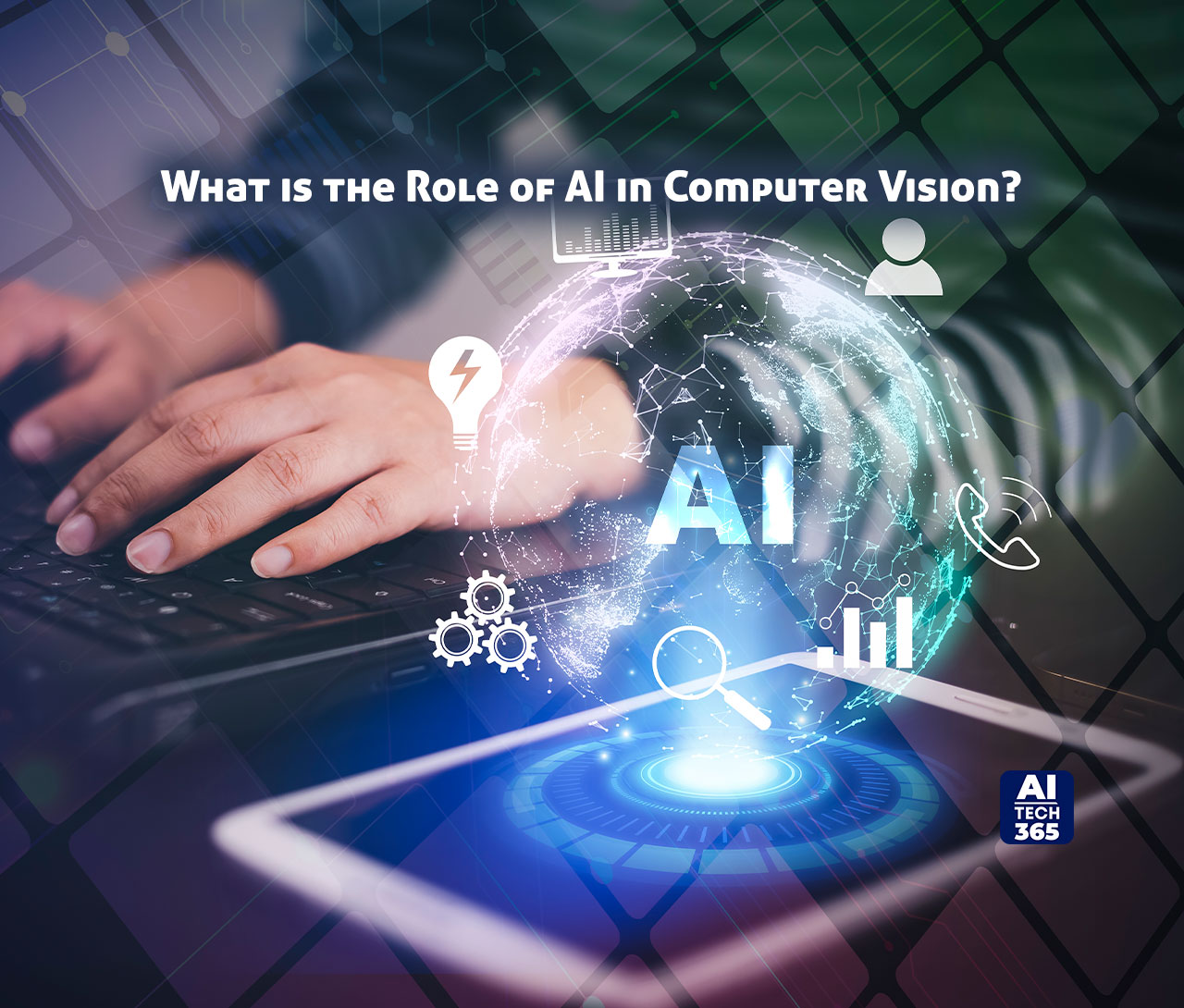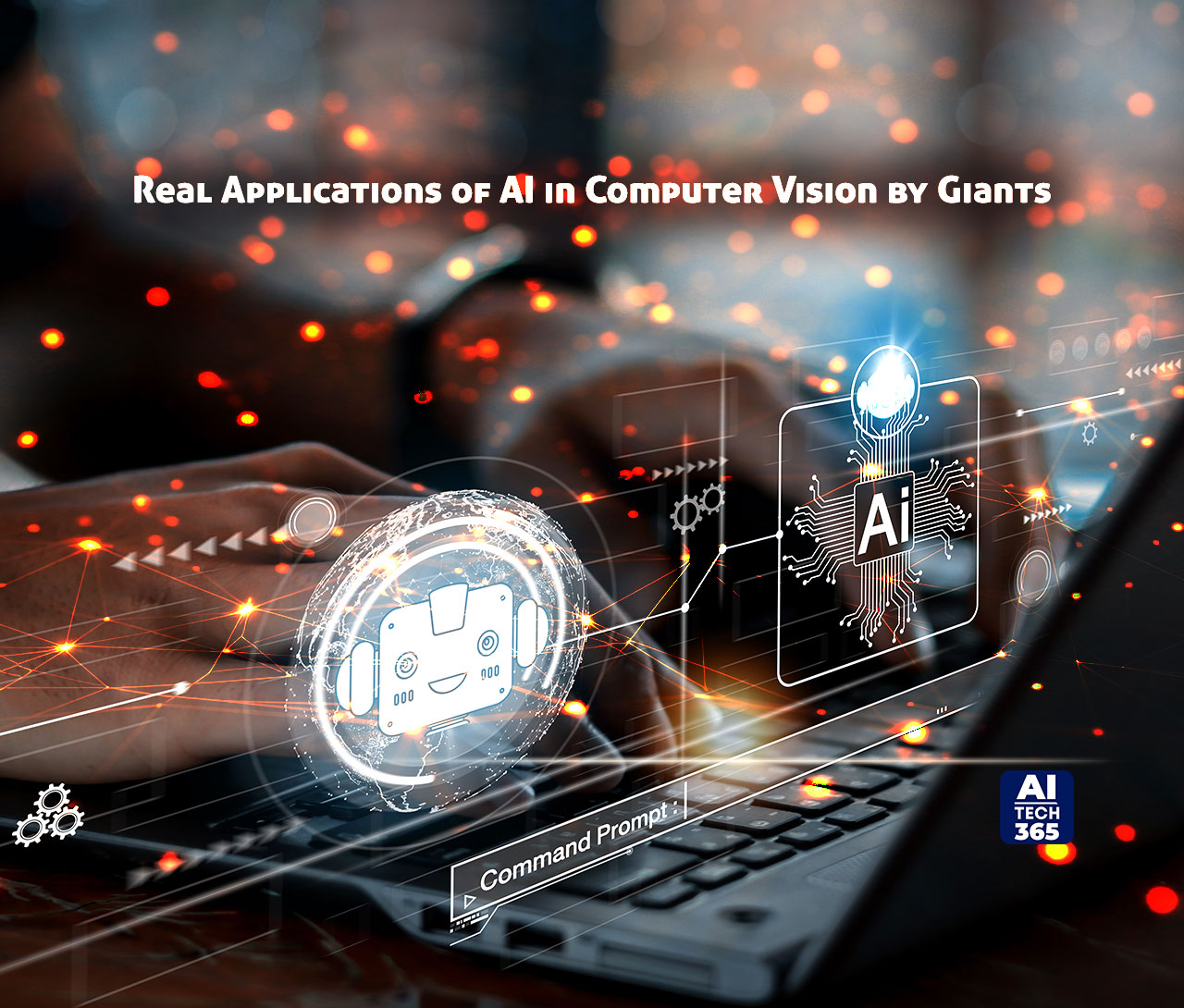When you unlock your smartphone, you may have noticed that it recognizes your face without needing a secret code. This happens because of AI-driven computer vision technology. This tech can understand visuals based on what it has learned from data. It doesn’t recognize things as humans do, but it can identify patterns and shapes in images. AI plays a big role in computer vision, and we use it in various ways in our daily lives and across different industries.
Estimates show that the AI in computer vision market is anticipated to reach $206.33 billion by 2030. Without further ado, let’s delve into this billion-dollar industry.
What is Computer Vision in AI?
Computer vision in AI refers to the field that enables computers and systems to derive meaningful information from digital images, videos, and other visual inputs. It allows machines to “see”, observe, and understand the visual world, simulating the way humans perceive and interpret visual data. By applying artificial intelligence (AI) and machine learning (ML) models, computer vision trains computers to capture, analyze, and interpret information from visual data.
This technology plays a crucial role in various applications, including object identification, facial recognition, image classification, recommendation systems, monitoring, and detection. Computer vision in AI has the potential to revolutionize industries by automating processes, enhancing decision-making, and enabling machines to understand and interact with the visual world.
What is the Role of AI in Computer Vision?
 AI and machine learning are pivotal in driving computer vision technology. AI empowers computers to understand, recognize, and analyze diverse visual data by swiftly absorbing and learning from vast labeled and unlabeled datasets. This capability allows computer vision to identify various features, patterns, and relationships in videos, graphics, and infographics.
AI and machine learning are pivotal in driving computer vision technology. AI empowers computers to understand, recognize, and analyze diverse visual data by swiftly absorbing and learning from vast labeled and unlabeled datasets. This capability allows computer vision to identify various features, patterns, and relationships in videos, graphics, and infographics.
Machine learning, a subset of AI, is particularly influential in advancing computer vision. Using extensive training datasets, machine learning learns patterns and employs algorithms to detect features or objects in complex images. For instance, it can distinguish between a human face’s nose and eyes without confusion.
Also Read: 5 Mind-Blowing Applications of AI in Healthcare Robotics
Machine learning excels in image segmentation, categorizing images into logical parts. For instance, it can break down a car into windows, windscreen, wheels, and steering, analyzing each part’s characteristics. Despite its complexity, accurate data recognition is crucial to prevent erroneous conclusions. For instance, in autonomous vehicles, mistaking a pedestrian for a zebra crossing due to clothing patterns could lead to disastrous consequences.
Decoding the Use Cases of AI in Computer Vision
AI-powered computer vision finds application across various industries, delivering notable benefits. Here are some key use cases:
- Medical Imaging: AI algorithms assist medical professionals in analyzing X-rays and Magnetic Resonance Images, enabling the detection of anomalies and contributing to more accurate diagnoses. For instance, computer vision is utilized to identify potential issues in mammograms, aiding in the early detection of breast cancer.
- Autonomous Vehicles: In autonomous vehicles, computer vision interprets the surroundings as the vehicles navigate without human control. Precise identification of objects and surroundings is crucial to prevent potential disasters.
- Agriculture: AI-powered computer vision assesses crop quality and soil conditions, and identifies plant diseases. Farmers benefit by optimizing crop yields and reducing resource wastage based on insights provided by this technology.
- Retail: Retail giants leverage AI-powered computer vision to enhance supply chain efficiency, improve overall productivity, and elevate customer experiences. The technology helps identify and replenish empty shelves, while also recommending products based on customer preferences, browsing behavior, or purchasing history.
- Surveillance: Authorities use AI-powered computer vision for surveillance in public spaces such as railway stations, museums, stadiums, and airports. It aids in rapidly identifying suspicious behavior or movements, enhancing security measures and potentially preventing criminal activities as the technology evolves.
Real Applications of AI in Computer Vision by Giants
 AI in computer vision has numerous real-world applications across various industries. Brands are leveraging computer vision technology to enhance their products and services. Here are some examples:
AI in computer vision has numerous real-world applications across various industries. Brands are leveraging computer vision technology to enhance their products and services. Here are some examples:
- NAUTO: It uses AI in computer vision to make driving safer. Its AI-powered fleet safety platform assesses risk in real-time by analyzing driver alertness, vehicle movement, and contextual data. This information gives drivers extra time to react and avoid accidents. Over 400 brands use NAUTO’s platform, which has processed over a billion miles of driver footage.
- Verkada: Verkada aims to make video surveillance more robust by utilizing AI and computer vision. Instead of relying on basic equipment that can be easily compromised, Verkada’s system securely processes video footage and identifies people or detects movement. This helps improve security and reduce vulnerabilities associated with traditional approaches.
- Microsoft’s Azure: Microsoft’s Azure AI Vision service includes brand detection as a specialized mode of object detection. It uses a database of thousands of global logos to identify commercial brands in images or videos. This feature can be used to discover popular brands on social media or prevalent brands in media product placement. The service returns the brand name, confidence score, and bounding box coordinates around the logo.
- Google Cloud: Google Cloud offers Vision AI, which provides a range of computer vision offerings. Vertex AI Vision is a fully managed development environment that allows businesses to easily build, deploy, and manage computer vision applications. It includes features like real-time video data ingestion, application creation, and model output storage. Additionally, Google Cloud offers pre-trained APIs, AutoML, and custom models for image and video analysis.
Winding Up
Numerous advancements in the application of AI in computer vision have revolutionized the way brands operate and interact with the world. The real-world applications of AI in computer vision have demonstrated immense potential in enhancing safety, security, and overall user experience. From analyzing driver behavior to improving video surveillance, brands are leveraging AI-powered computer vision to gain valuable insights and make data-driven decisions.


